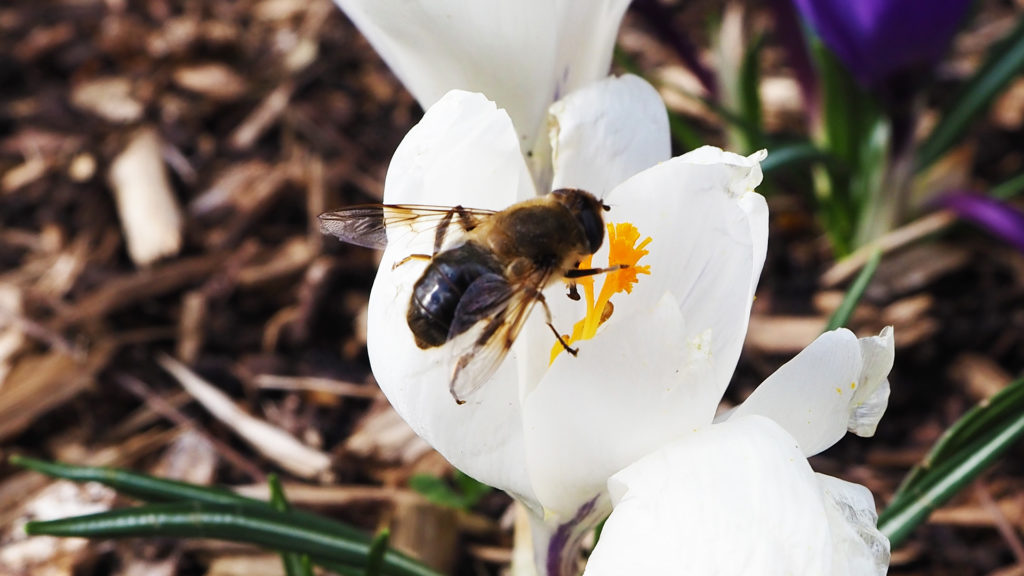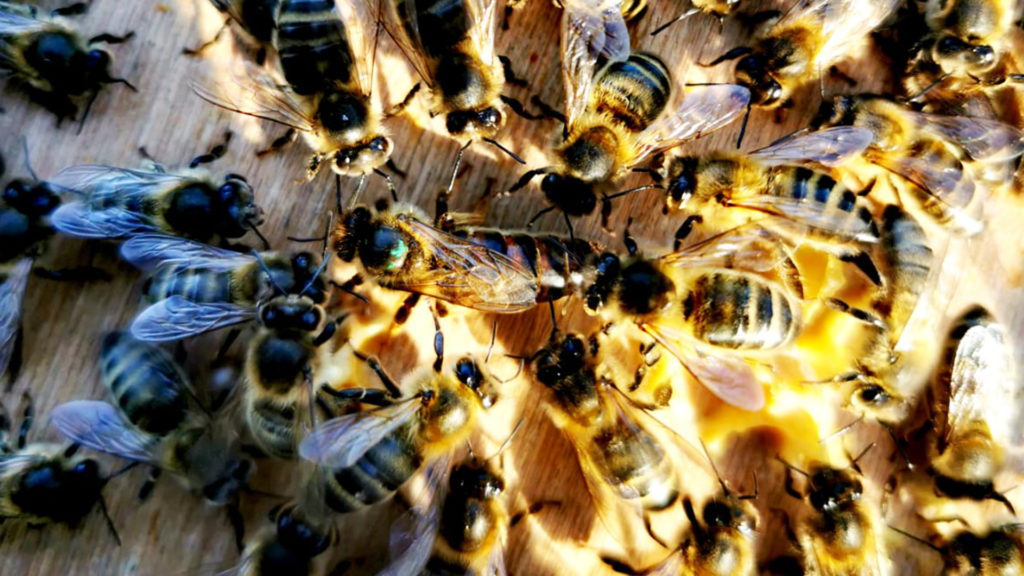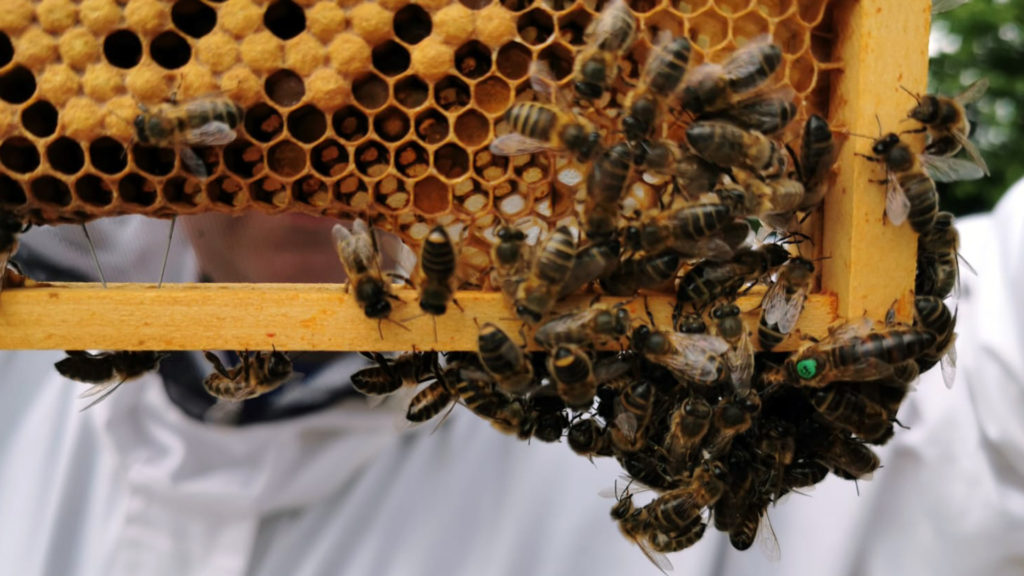At the top of Mary’s Organic Garden live two colonies of Native Irish Black Bees who more than earn their keep. Not only do they produce delicious honey for our guest to enjoy as part of their breakfast, but they also pollinate the plants, trees and crops grown in the garden.
During the winter, the bees stay close to the warmth of the hive, leaving only to look for water. They feed on the stores of nectar built up over the year supplemented, if necessary, with bee fondant, a special mix of sugar, glucose and vitamins which the beekeeper places in the hive to keep the bees fed if their own stores run low.
Now that spring has sprung and the temperature is starting to rise, the bees are starting to venture out more and the baby bees are beginning to emerge. If you walk around Mary’s Organic Garden and the resort grounds, you will see them buzzing around the crocuses and other flowers, picking up pollen to take back to the hive.

The hierarchy of the hive
Each colony is a community in its own right, with its own head of the hive, the Queen Bee.
The queen bee has just three jobs in life – to mate, produce eggs and act as the leader, ensuring that the colony functions properly. As is befitting of her title, she is treated like royalty, dining exclusively on Royal Jelly, an enriched substance made by the worker bees and fed to her by her attendant bees. However, the minute she stops producing enough eggs or dies, the bees will get to work on replacing her by feeding an egg or young larva with enough Royal Jelly and transforming her worker cell into a queen cell to allow her to grow into a Queen Bee. However, if the Queen Bee dies when there are no fertilised eggs, the colony will not be able to survive.
Drones are male bees developed from unfertilised eggs laid in drone cells. Their job is to fertilise the queen. They mature at around 14 days and live for a further 16 – 18 days or until they mate with the queen, an act that is fatal for the drone. They can’t feed themselves and so are fed by the worker bees.

Worker Bees are female bees that have developed from fertilised eggs. However, because they do not have developed ovaries, they are sterile. Worker bees live for just 35 days (longer in the winter) and during that time will work their way through a number of jobs, depending on their age, before literally dying of exhaustion…if they live that long because if they sting you, they die. Here are the jobs a worker bee can expect to do during her short life:
Housekeeper (Days 1 – 3): Cleaning the cells from which young bees have recently hatched, ready for the queen to lay eggs in.
Undertaker (Days 3 – 16): Removing the remains of dead bees from the colony to maintain hygiene and prevent the spread of disease.
Nursery Bees (Days 4 – 12): Feeding the larvae with royal jelly (but not enough to turn the fertilised female larvae into a Queen Bee).
Queen’s Attendants (Days 7 – 12): Feeding and grooming the queen to ensure that she can continue to lay eggs.

Storing pollen and nectar (Days 12 – 18): Collecting nectar and honey from the foragers at the entrance to the hive, which they put into designated cells. The pollen is stored with the nectar and becomes Bee Bread which later becomes Royal Jelly. Nectar also becomes honey.
Ventilating the hive (Days 12 – 18): Bees live at a temperature controlled to between 32 and 35 degrees Celsius. Bees use their wings to control the temperature.
Wax production (Days 12 – 35): Using wax produced by glands on the underside of their body, the bees build the comb and plug the cells containing larvae and honey.
Guard Bees (Days 18 – 21): These bees patrol the entrance to the hive ensuring that only bees from the colony are able to enter.
Foragers (Days 22 until death): These bees find and bring home the food and water needed to keep the colony alive. Some of these bees will also take on the role of scout bees who go out to look for sources of food, returning to the hive with the details of the location.
Next time you spread some honey on a piece of toast, eat an apple, enjoy a flower, remember that without the buzz of a bee, none of those things would exist.

Leave a Reply